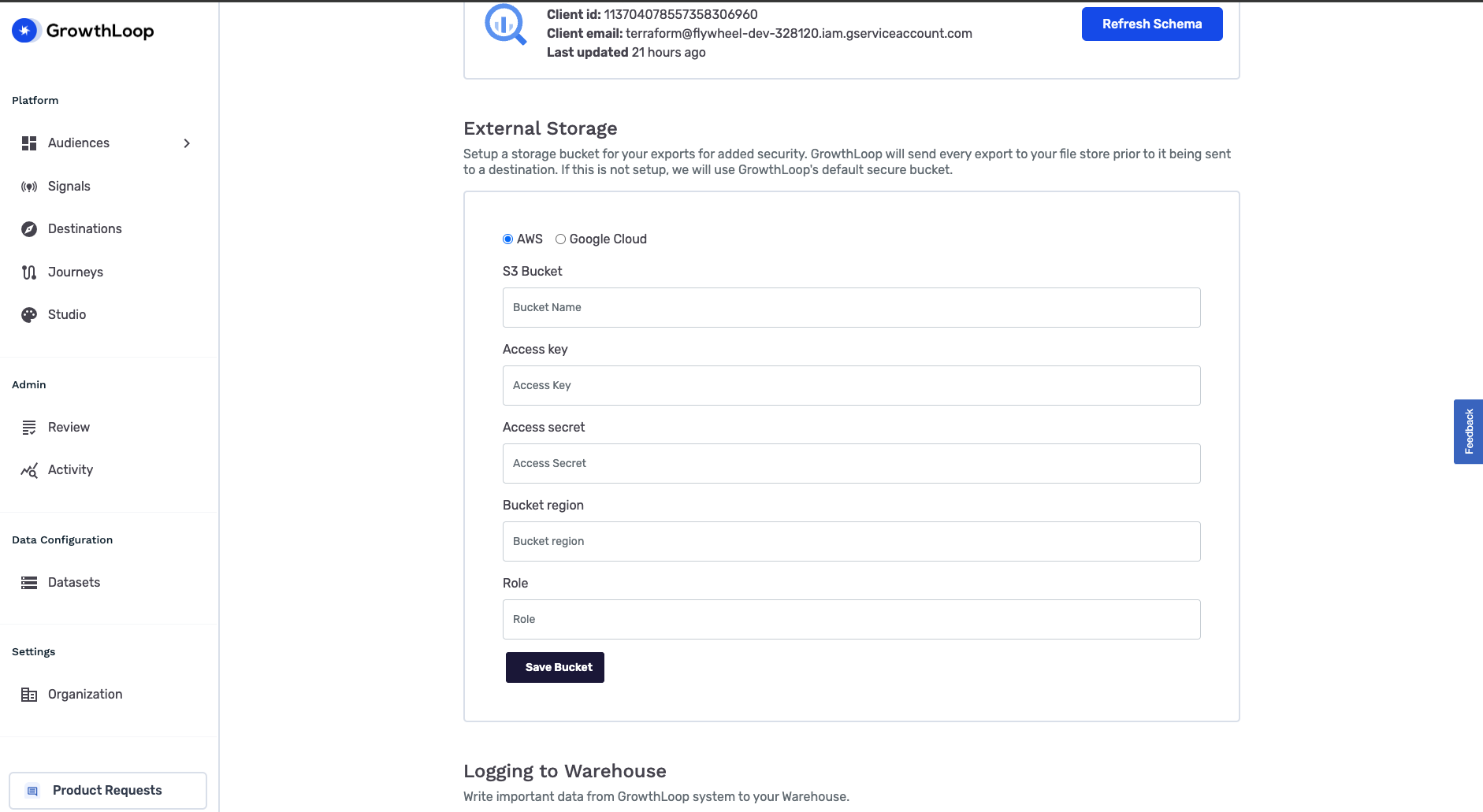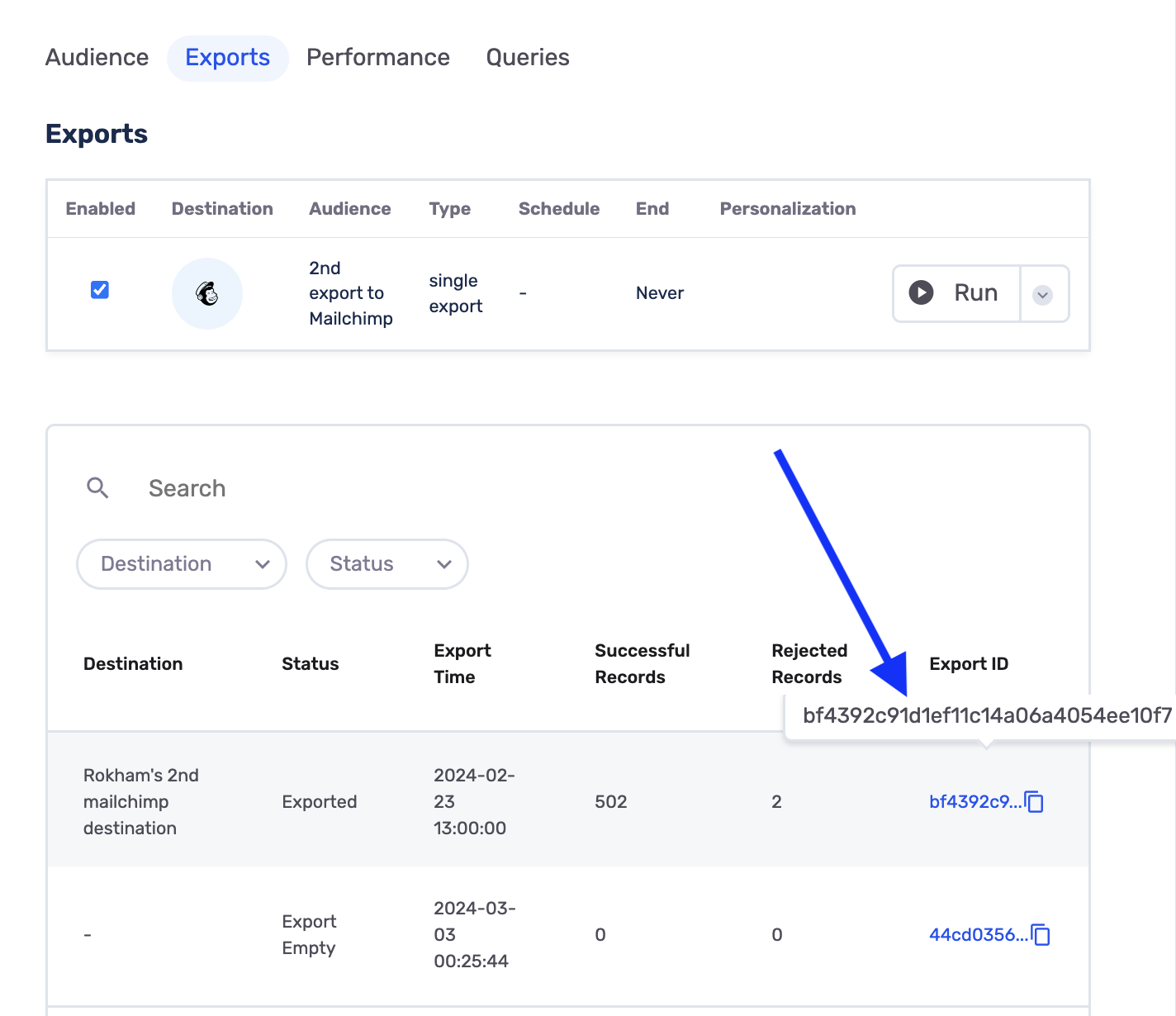Logs Access
Learn how to access logs for your syncs, audiences, and journeys.
The GrowthLoop platform enables you to automatically export processing logs to your systems by integrating directly with storage buckets in your system of choice. Your team will have full visibility into logs written from Growthloop's system when processing Syncs and Audiences. To get started, simply connect your storage bucket in your GrowthLoop storage settings.
Bring your own bucket
Currently, we support both:
- Google Cloud Storage (GCS)
- S3 (AWS)
Amazon S3
To setup S3 as your storage bucket follow these steps:
- Create a new S3 bucket in your AWS account
- Make sure to block public access
- Setup a TTL time of your choice to enhance security
- Create a new access key and secret with access to that bucket.
| Permission | Details |
|---|---|
| s3:GetObject | Permission to retrieve objects |
| s3:PutObject | Permission to add object to bucket |
| s3:ListBucket | Permission to list some or all objects |
Google Cloud Storage
To set GCS as your storage bucket follow these steps:
- Create a new GCS bucket in your account.
- Make sure to block public access
- Setup a TTL time of your choice to enhance security
- Create a service account for a user with the following permissions:
| Permission | Details |
|---|---|
| storage.objects.list | List objects in a bucket |
| storage.objects.create | Create objects in a bucket |
| storage.objects.get | Get objects in a bucket |
Setup Bucket
Once you have your bucket ready along with the correct credentials head over to the Organizations tab in the GrowthLoop application.

Select your bucket platform and provide the necessary credentials then hit save. That's it! Our platform will begin syncing processing logs directly to your storage bucket.
How to use GrowthLoop logs
Now that your bucket is setup, GrowthLoop will begin writing logs directly to the bucket you provided. Logs will be written to the batch_errors directory within your bucket. The most common usage pattern of GrowthLoop's logs are the following:
-
You are in the GrowthLoop interface and looking at audiences with export issues. Or you have received an alert of an audience export issue.
-
Navigate to the specific audience or sync to view
export_iddirectly associated with the export that had an issue. Simply navigate to the Exports tab and take a look at the Activity panel.
-
Click the copy icon to copy the
export_idto your clipboard. -
Then navigate to your Storage Bucket and the
batch_errorsdirectory. -
Each file will be named with the
export_idin its title. This is very convenient for looking up particular exports from your audiences. -
Simply search your storage bucket for the file with
export_idyou copied to clipboard in its title. -
Open the logs file to view row level processing logs for that particular export and see exactly what happened.
If you experience any issues or have any questions, please reach out to us at [email protected], and we’ll be in touch shortly!
Updated 7 months ago
